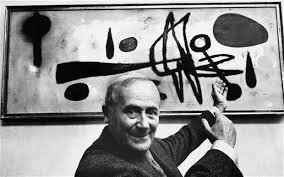What is Surrealism in Art?
Surrealism is an artistic movement that has had a lasting impact on painting, sculpture, literature, photography, and film. Surrealists, influenced by the ideas of dreaming and the unconscious of Sigmund Freud, were claimed to be the breaking down of logic chains and expressed that idea in their art by making an illusion that was difficult to put into unimaginably improbable landscapes. Surrealism has never disappeared as a creative artistic principle.
The emergence of Surrealism art:-
Surrealism formally started with Dadaist writer André Breton’s 1924 Surrealist manifesto, but the movement originated as early as 1917, influenced by the paintings of Giorgio de Chirico, who captured street locations with a hallucinatory nature. Surrealism is founded on the belief in the superior truth in the benevolence of dreams and disinterest in the thinking of certain types of historically disregarded associations. Surrealism is a work designed to revolutionize the human being’s experience and ignore a realistic view of life that affirms its meaning. In the unforeseen, uncanny, disregarded, and unorthodox the poets and artists of this movement found wonder and strange beauty.
Features of Surrealistic art:-
1.Symbolic visions and dreamlike scenes
2.Unforeseen, illogical juggling
3.Strangely assemblies of everyday things
4. Automatism and a spirit of spontaneity.
5.Distorted figures and biomorphic shapes
6. Personal iconography
Types of surrealism
Two simple surrealisms existed: Abstract and Figurative.
Figurative:- Figurative surrealists produced recognizable representational art. Many of the figurative surrealists were profoundly influenced by Giorgio de Chirico, an Italian painter who founded the Metaphysical movement. Giorgio de Chirico, the figurative surrealist, used techniques of realism to render startling, hallucinatory scenes
Abstract:- Abstract surrealists wanted to break entirely free from convention. They explored new media and produced abstract, frequently unrecognizable, forms and symbols, consisting of undecided works. Surrealism exhibitions, both figurative and biomorphic, as well as works that may be identified as Dadaist in Europe between the 1920s and the 1930s.
The use of geometrics, as exemplified by Jean Arp, Andre Massón, Joan Miro, Yves Tanguy, Robert Matta, and others, for the emotionally stronger influence of natural organic forms actual or imagined, was evaded by Surrealist symbolism. The representational style of Surrealism (Verism) deployed true-life imagery in an impossible form or location. See for instance the work of Rene Magritte, Salvador Dali, and Paul Delvaux. Central to a number of surrealist artists was the technique of subconscious or automatic painting.
Famous surrealists painters:-
Joan Miro:- Painter, poet, artist, and sculptor Joan Miró (1893–1983) created shiny, biomorphic forms that seemed to bubble out of his imagination. In order to excite its imagination, Miró used automatic doodling and painting, but his art was carefully drawn. He was present with the surrealist party and many of his works reveal the movement's influence. The Miró constellations' "Woman and Birds'' sequence shows a personal iconography that is familiar and strange.
Pablo Picasso:- The Spanish artist Pablo Picasso (1881–1973) had been praised as the ancestor of cubism as early as the start of the Surrealism movement. Picasso did not draw his Cubist paintings and sculptures from fantasies, and he barely skirted the edges of the surreal movement. His art nonetheless reflected the surrealist philosophy of spontaneity. Picasso had works replicated in LaRévolution Surréaliste and displayed with surrealist artists. His fascination with iconography and primitive forms contributed to a series of paintings that became increasingly surreal. "On the beach," for example, (1937) puts human figures in a dreamlike setting, blurred. Picasso also composed surreal poetry made up of blurred photographs.
Paul Klee: Paul Klee (1879-1940), a German-Swiss artist who hailed from the musical family, packed his paintings with a personal musical iconography and playful symbols. He's closely linked to Expressionism and Bauhaus. Yet surrealist proponents of the movement praised the mechanical diagram Klee used to produce uninhibited paintings such as Music at the fair.
Surrealism was focused on tapping into the unconscious mind to release creativity. Surrealism aimed to revolutionize the human experience, rejecting a rational vision of life in favor of one that asserted the value of the unconscious and dreams.





